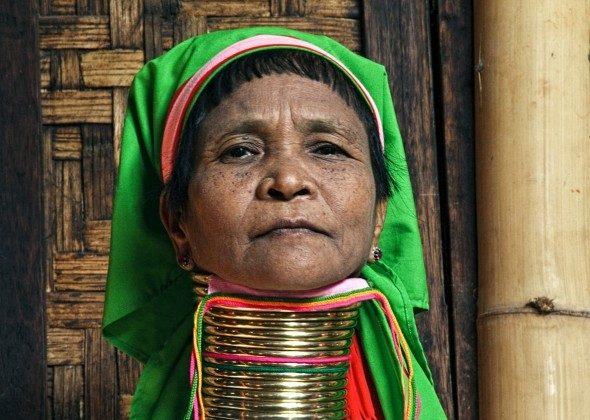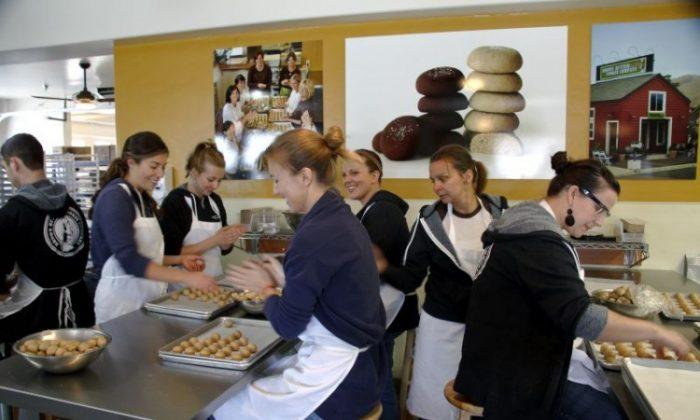As my husband Paul and I stepped into the horse-drawn carriage, the driver flashed a huge grin and said “Mingalaba,” which means hello. The horse ambled along a bumpy dirt road and suddenly, out of the surrounding landscape that was dotted with rice paddies, gold and white pagodas emerged as if by magic, gleaming in the afternoon sun. They were the remnants of what used to be the powerful and dazzling Inwa, the former capital of Burma, which was first established in the 14th century.
We alighted from the carriage and were greeted by a gaggle of young girls selling jewelry, sun hats, and postcards. I smiled, said I didn’t need anything, and walked around the ruins as one of the girls called after me, “See you later, alligator, in a while, crocodile.” I burst out laughing and bought some jewelry from her.
“It’s the perfect time for us to be here,” I whispered to my husband. “It’s still unspoiled, fresh, and the locals are excited by their contact with foreigners.”
Burma is now a magnet for adventurous travelers who want to explore the little-known destination. The Burmese government has freed opposition political leader Aung San Suu Kyi after l5 years of house arrest, allowed her a role in the government, and opened its doors to tourists. ElderTreks (www.ElderTreks.com), a Canadian company that has taken travelers over 50 to Burma for more than a decade, offered a well-organized, varied, 18-day trip, and we signed on.
In the capital city of Yangon, which used to be called Rangoon, visitors remove their shoes and socks and climb up the palatial stairs of the famed, 190-foot-high Shwedagon Pagoda. At the top, a breathtaking world of golden shrines, incense, chanting monks, and statues of the Buddha greet them.
By day, tourists from all over the world converge and learn from their guides about the planetary posts, where adepts of Theravada Buddhism come to make offerings at the station that corresponds to the day of the week on which they were born. But at night, few tourists were present, and Paul and I wandered and stared in awe at the magical world of illuminated temples, pulsing auras around the Buddha statues, praying devotees, and intoning monks and nuns.
“I feel like Marco Polo,” I whispered to Paul, “discovering a world that is virtually unknown to the West.”
At Inle Lake, which was, for me, the visual highlight of the trip, we stepped down into a wooden long boat (five passengers to a boat) and stopped to greet and photograph one-legged rowers with their large, cone-shaped baskets that serve as fishing nets. The men row standing up, with one leg wrapped around an oar. This enables them to row with one side of their bodies and fish with the other.
We were certainly not the only foreigners on the lake. Tourists in groups from France, Italy, Malaysia, and the United States were in other long boats, snapping away at the fishermen, as we were.
The next day, our guide Turin led us through less-traveled waterways. We saw floating gardens, fishermen slapping the water with bamboo poles to scare the fish to make them visible for catching, wooden houses on stilts, and locals washing their clothes and bodies on the edges of wooden docks. We stopped at Pao Monastery, where burgundy-robed monks studied by the light of unusual, oval-shaped windows.
“We’re the only group here right now,” Paul said enthusiastically, as he photographed the monks and the monastery. “A few years from now, I’d probably be trying to sneak in a shot without getting in the way of dozens of photographers.”
Turin was extremely sensitive to the desires of our group to see off-the-beaten-path things, as well as the must-see sites. He asked the driver to stop our bus when he saw extraordinary photo ops, and he took us into two village schools and for rides with locals on a train, a ferry, and a trishaw (a style of rickshaw that seats one customer). At almost every market, he purchased fresh and packaged Burmese foods for us to taste, and he taught us basic expressions in Burmese so we could interact with locals.
At one sprawling tourist shop, two women from the Padaung tribe, their necks hidden by large, coiled gold rings that can weigh up to l5 pounds, posed obligingly for camera-toting tourists. At first, I was appalled at the sideshow-like setup, but when I discussed it with Turin, he questioned the older of the two women, who said she was glad to have work and income.
Then, when the photo frenzy had ceased, I sat down next to the younger woman and tried out the expressions I had learned: “hello, how are you, did you have a good rest, did you eat well, where is the bathroom?”
She laughed at the latter, because I wasn’t actually asking for a restroom; I was just trying to connect with her. Then I pointed to her and said the word “beautiful” in Burmese. She pointed right back at me and said “beautiful.”
No, no, I insisted, “you” (pointing again) are the beautiful one.
No, no, she insisted right back, “it’s you.”
I saw that she was staring into my eyes, which are green, and an unusual sight for a Burmese. I figure that a few years from now, the young girl will see a lot more green and blue eyes, but when I was there, I felt as though the color of my foreign eyes made for a delightful point of contact.
At Mt. Popa, an extinct volcano and pilgrimage site for Burmese people, 37 of the most important Nats, or spirits, are said to dwell. Before Buddhism, locals worshipped Nats and it was so difficult to convince people to give up their animist beliefs that Nat shrines now exist side-by-side with Buddhism.
I met a group of French tourists who had just come down from climbing more than 700 steps to the famed Taung Kalat Monastery that perches high up on an outcrop. Turin had dissuaded us from the ascent. “You can go if you like,” he had told us, “but you have to climb up barefoot and there are a lot of monkeys and monkey poop.” I thought he was kidding, but the French said it was true, and that we were lucky our guide had warned us.
Instead of tromping through animal excrement, Turin suggested we walk through the town on our own and perhaps visit the Nat shrine. Paul and I did the latter. We took off our shoes, as usual, and encountered a loud, boisterous orchestra, imposing statues of the 37 Nats, flowers, fruits, and two trance mediums who danced exuberantly. If a Nat believer has good fortune and makes a lot of money, it is customary to hire an orchestra and mediums to dance, make music, and thank the providential Nats.
Later, in the bus, Turin said we had been very lucky, as he had visited Mt. Popa many times and had never seen a ceremony in the shrine. “You picked a very good time to come to Myanmar,” he said.
We smiled. He was right.
IF YOU GO:
Although the tour is all-inclusive, take new dollar bills to pay for any incidentals or personal purchases. ATMs are almost non-existent, dollars are the preferred currency for exchange, and banks didn’t accept our “used” bills. We had to rely on currency changers for a much lower rate. Larger bills ($100 or $50) get a better exchange rate than smaller bills.
Late fall to January or mid-February are the best months to go. After that, it gets much hotter and, in the summer, it is not advisable to go because of the heat.
Burma is safe; restaurants that cater to tourists are clean and hygienic; the hotels we stayed in ranged from acceptable to good; Wi-Fi was available in many places; but it can be dusty, smoky, and polluted, as people burn leaves in the country and there don’t seem to be emission standards in the cities.
Judith Fein is an award-winning international travel journalist who has contributed to more than 100 publications and is the author of the acclaimed book “LIFE IS A TRIP: The Transformative Magic of Travel.” Her website with her award-garnering photojournalist husband Paul Ross is:http://www.GlobalAdventure.us


